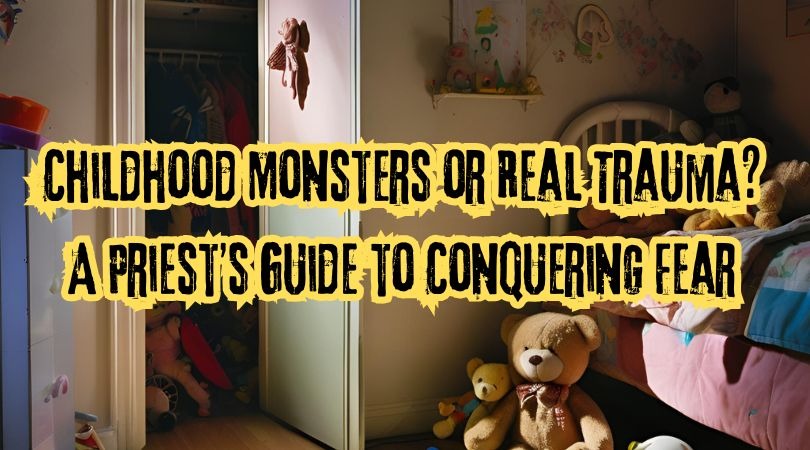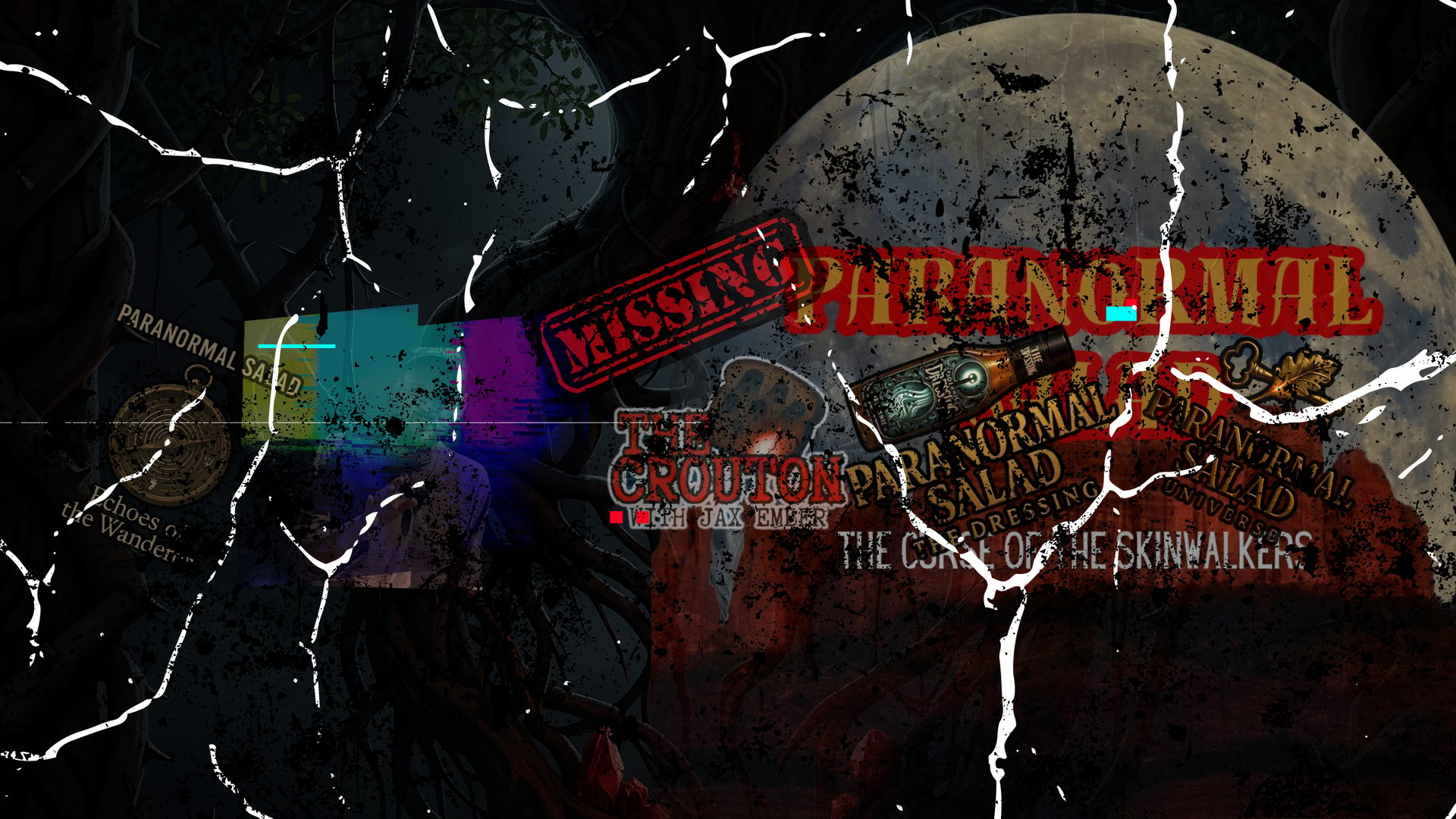Childhood Monsters or Real Trauma? A Priest’s Guide to Conquering Fear
What if the monsters in your child’s closet aren’t just figments of their imagination? In this eye-opening exploration, Jesuit priest and psychologist Dr. Everett Thorne dives into the intersection of fear, trauma, and the paranormal. Discover the profound psychological and spiritual truths behind the creatures that haunt our children’s dreams.
FEARMONSTERSDR. THORNEDEMONSURBAN LEGENDSPARANORMAL
Dr. Everett Thorne
1/11/20254 min read


The Monsters in the Closet: Psychological and Spiritual Trauma in Childhood
By Dr. Everett Thorne
As a Jesuit priest and psychologist, my vocation calls me to navigate the complex intersections of the spiritual and the psychological. Among the countless mysteries I have encountered, one that never ceases to intrigue and concern me is the fear of "monsters in the closet." It’s a universal phenomenon, appearing across cultures and generations. But what fascinates me most is that these monsters often represent something far more profound than mere childhood imagination—they are reflections of unspoken fears, traumas, and, in some cases, potential spiritual disturbances.
A Universal Fear with Deep Roots
The concept of monsters lurking in the shadows is as old as human storytelling. From the bogeyman in European folklore to the kaibutsu of Japanese tales, societies have long crafted narratives of terrifying beings hiding just out of sight. For children, the closet represents an unknown space, dark and foreboding, where imagination runs rampant. It is a place where fears of the unfamiliar and the unresolved find form.
But why the closet? Psychologically, enclosed spaces like closets and under beds represent the hidden and repressed. Just as adults might suppress their anxieties and traumas, children project theirs into spaces that feel simultaneously close and inaccessible. The "monster in the closet" becomes a vessel for fears they cannot yet articulate.
Monsters as Mirrors of Trauma
During my work as a psychologist, I’ve observed that children’s descriptions of their monsters often reveal startling insights into their inner worlds. For example, a young girl I counseled described a "snake monster" coiled in her closet that hissed cruel words at her. Through therapy, we uncovered that she was grappling with the emotional sting of bullying at school. The monster was not just a product of her imagination; it was a psychological manifestation of her pain.
In other cases, the connection between a child’s monster and their experiences is even more direct. A boy once described a figure with glowing red eyes that appeared after his parents divorced. This figure would whisper to him that he was unwanted, echoing the feelings of rejection he internalized from the separation.
As a psychologist, I approached these cases with empathy, using therapy to address the underlying trauma. As a priest, however, I remain open to the possibility that some fears are not purely psychological.
The Spiritual Dimension of Closet Monsters
While most fears can be explained through the lens of psychology, not all can. Catholic teachings remind us that darkness has agents of its own, preying on the vulnerable. A child struggling with emotional wounds can become spiritually susceptible, much like an open wound attracts infection.
I once encountered a family whose eight-year-old son described a shadowy figure in his closet. He claimed it only appeared when he was alone and that it grew stronger when he felt sad or angry. This family, deeply religious, sought my help as a priest. After a thorough psychological evaluation, I found no clinical signs of delusion or psychosis. Spiritually, however, the case felt different. A blessing of the home, combined with family counseling, seemed to resolve the issue. The boy reported that the shadowy figure never returned.
The Long-Term Impact of Childhood Fears
Unaddressed fears can leave lasting scars. I’ve counseled adults who traced chronic anxiety or insomnia to unresolved childhood fears of monsters in their closets. These fears may morph over time into other forms of anxiety, manifesting in phobias or an inability to trust others.
Yet, I’ve also seen the opposite. When children are empowered to confront their fears, they often grow into resilient adults. For example, a boy I worked with was terrified of a "growling beast" in his closet. With his parents’ help, we devised a strategy where he "banished" the beast using a flashlight and a prayer. Years later, that boy became a firefighter, attributing his bravery to that childhood triumph.
How Parents and Caregivers Can Help
Parents play an essential role in guiding children through these fears. The right approach balances psychological understanding and spiritual wisdom.
Validation: Never dismiss a child’s fear as "silly" or "just imagination." To them, the fear is real, and dismissing it may prevent them from sharing deeper emotions.
Exploration: Encourage children to describe their monsters in detail. This can provide valuable insights into their fears and feelings.
Empowerment: Give children tools to confront their fears. Whether it’s a "monster spray," a nightlight, or a prayer, these rituals can instill a sense of control.
Environment: Create a safe and calming bedtime environment. Reduce stimuli that may exacerbate fear, such as clutter, harsh lighting, or unsettling media.
Faith and Ritual: For families of faith, incorporating prayers or blessings can be deeply reassuring. Inviting a priest or spiritual leader to bless the home may also provide peace of mind.
The Role of Faith and Science
Faith and science are often seen as adversaries, but in my work, they are allies. Psychology provides the tools to understand the workings of the mind, while faith offers the strength to confront the soul. Together, they create a holistic approach to healing.
When addressing a child’s fear of monsters, I begin with the psychological—exploring potential traumas or environmental triggers. If the fear persists despite psychological interventions, I consider the spiritual. This dual approach ensures that no stone is left unturned.
The Mystery of the Closet
In my years of work, I’ve come to see the closet as more than a storage space. It is a symbolic representation of the unknown, of things hidden and waiting to be discovered. For children, it is where their fears reside, but it is also where their courage is born. When they confront what hides in the closet, they take the first step toward mastering their inner and outer worlds.
Conclusion
The monsters in the closet may never fully disappear. They may transform and evolve, taking new shapes as we grow. But with understanding, compassion, and faith, we can teach our children—and ourselves—to face them.
Ultimately, the true monster isn’t what hides in the closet—it’s the fear of facing it alone. Let us be the light that guides the way, for in light, no shadow can persist.
*Dr. Everett Thorne is a Jesuit priest, psychologist, and paranormal investigator. He has spent over two decades exploring the intersection of psychology and the supernatural, offering insights that bridge faith and science.


Robert Jerome Pagan @ Copyright 2025
Paranormal Salad (TM)